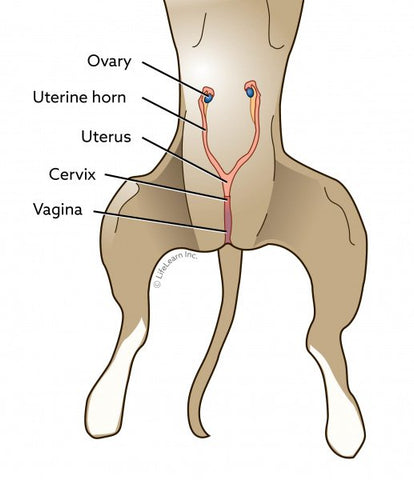What do you need to know about spaying and neutering dogs?


We often receive customer’s photos of their dogs wearing our recovery collars (yes, we read them all!) E-collar became necessary to prevent your dog from licking or nursing a surgical incision or wound. The first surgery your puppy would go will probably be the spaying / neutered surgery. If you decided to get your female puppy sterilised, it should happen at around six to nine months before their puberty.
Benefits of spaying and neutering dogs
Spaying will help stop your female puppy from reproducing and eliminates her hacer cycle. Most of the female puppy’s spay process has to undergo a medical operation from a vet. In most cases, the vet will remove the puppy’s ovaries. Sometimes, they will also remove her uterus and fallopian tube, it depends on the vet’s recommendations and assessment.
Neutering will help prevent unacceptable sexual behavior, reduce aggressiveness and accidental breeding for male dogs. In most cases, the vet will remove the testicles (orchiectomy) through surgery.

Besides the primary benefit of reducing the pet overpopulation crisis, there are other benefits of spaying.
- Significantly reduces the likelihood of male dogs marking
- Do not need sanitary pads
- Prevention of uterine infection known as pyometra
- Prevention from breast cancer. Females paid prior to their first estrus cycle can reduce the risk of breast cancer, a common cancer in unspayed females dogs.
- Reduce risk of certain illnesses. Spayed dogs generally live longer lives than those that are unspayed.
Behavior change after spayed
- Due to the changes in hormones and metabolism, your female puppy will no longer get into heat and won’t have restlessness behaviour.
- Change in metabolism will also lead to weight gain. You might need to adjust her nutritional needs after the operation.
- For male puppies, castration will decrease the behaviors driven by the male hormones such as undesirable sexual behavior, urine marking and aggression. Attraction to female dogs, roaming, mounting, and masturbation will be reduced or eliminated.
Recovery after surgery
- Prevent your dog from licking their surgical incision. Get an e-cone, known as the recovery collar.
- Keep your dog indoor and prevent unnecessary interaction with other pets.
- Don’t let your dog run or jump off to up to 2 weeks after surgery.
- Maintain hygiene of your dog bed. Check the incision to ensure it is healing properly. If there are unusual redness and swelling, make sure to contact your vet immediately.

